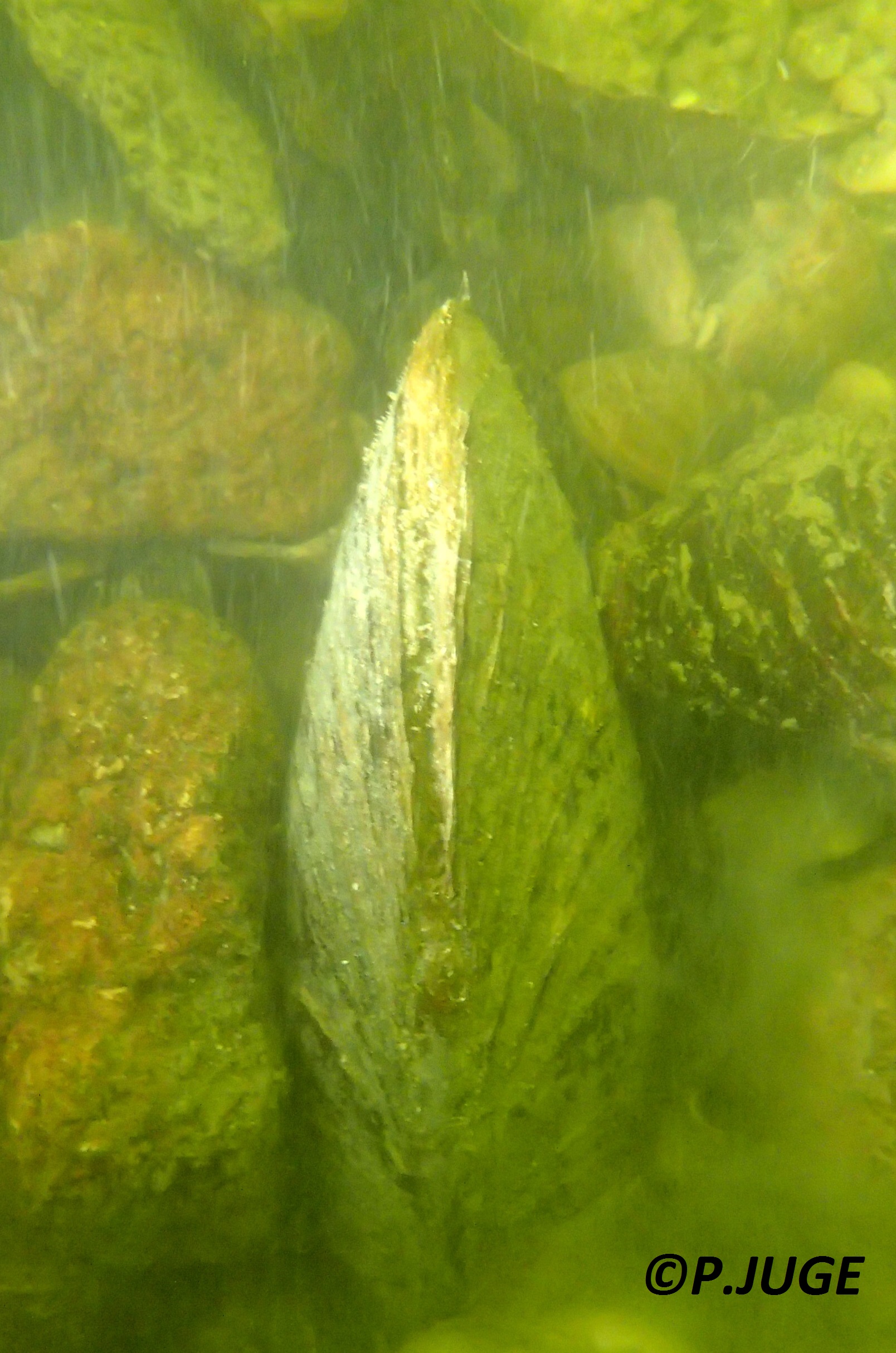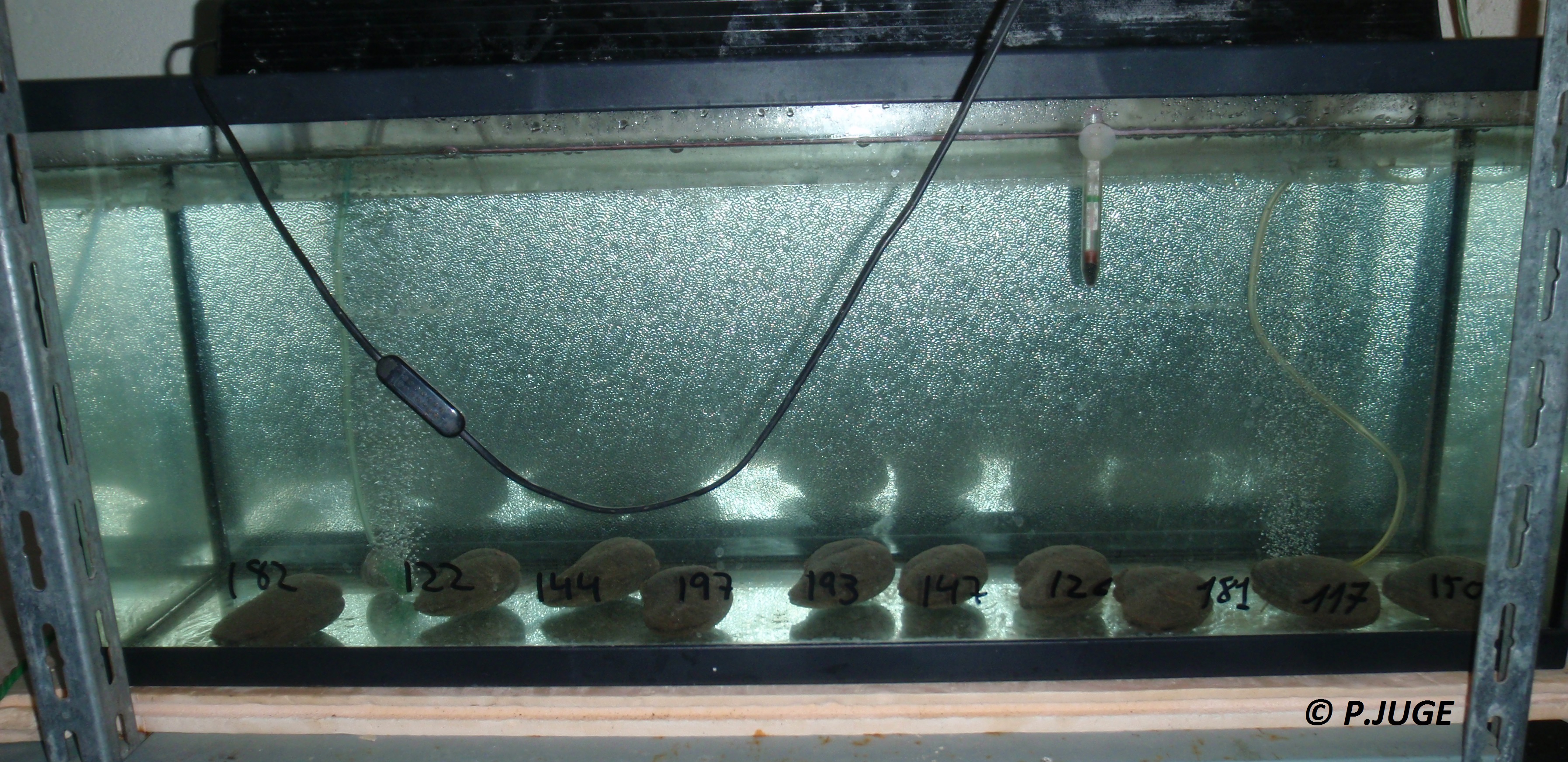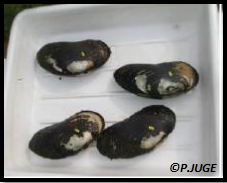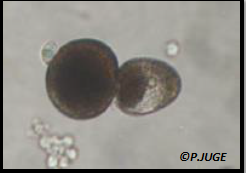News
For a month, the LIFE team has been collecting and filtering the water of the diferent basins and cylinders to collect hthe juveniles of Giant Pearl Mussel having unhooked from the sturgeons' gills. In this month, 18 000 juveniles of Giant Pearl Mussel have been counted ! These juveniles are today bred in troughs and will remain inside for several years so that they can acquire forces and handle a reintroduction without being weakened.
21st MAY 2016 : FIRST JUVENILES
The first Charente juveniles unhooked from the sturgeons'gills !
This saturday 21st of May, the first juveniles of Charente unhooked from the sturgeons' gills : We can count 7 ones alive at this stage. After being collected, they were put in a trough in which they will stay for several years in order to build up their strenght and be able to be reintroduced in the environment.
Different types of maintenance are carried out for the scientifics to study the evolution of juveniles according to their environment:
- A first trough contains natural sediments from the Creuse not sterilized with every kind of granulometry, as well as water from the Vienna no treated in circulation.
- Two other troughs will contain sediments from a sandpit. These sediments with sand dominance are sterilized and steamed, and contain water from the Vienna filtered with cotton wool, UV and coal.
Breeding through Trough filtration Hopper preventing the juveniles
to pass by the filtration system
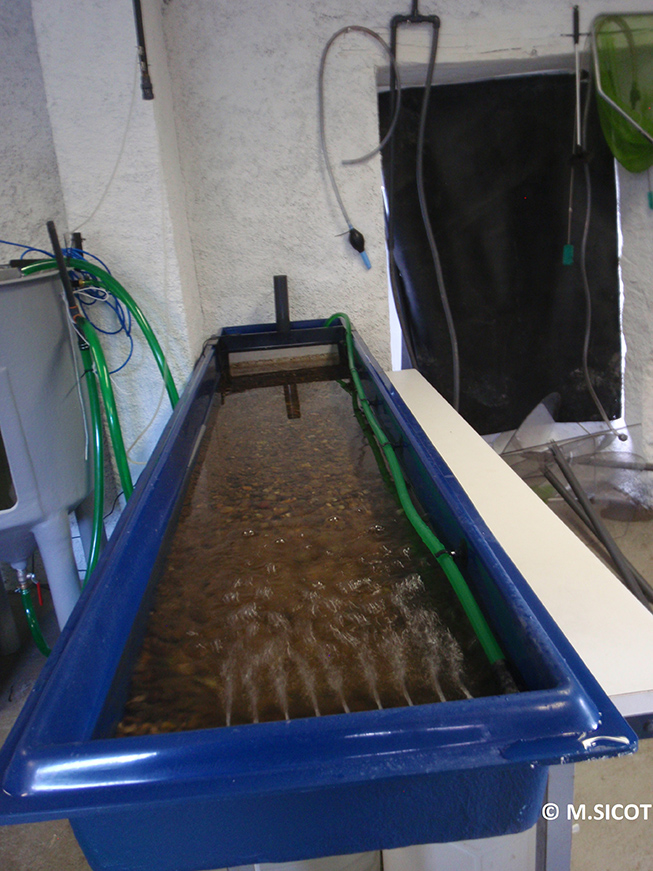

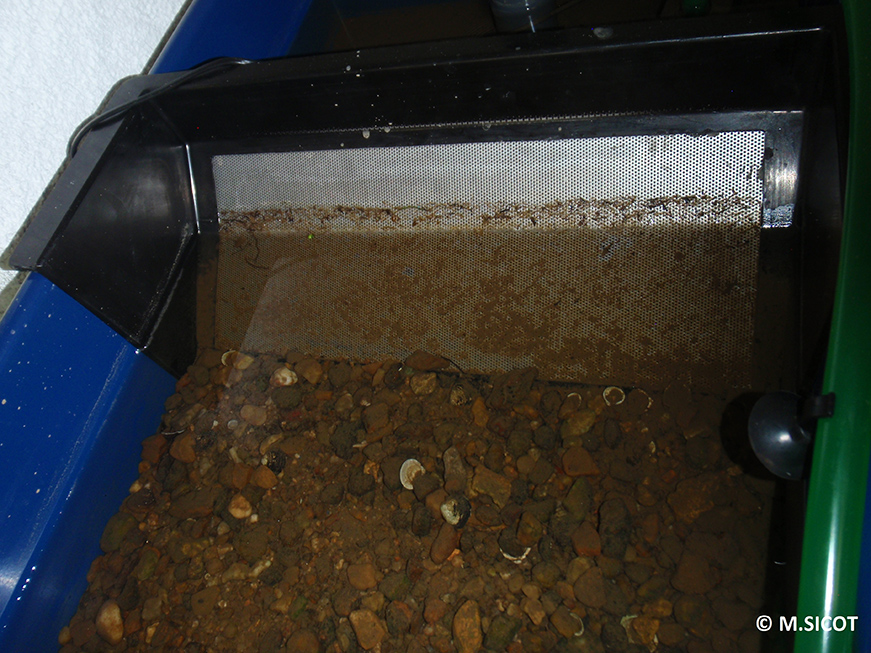
----------
APRIL 2016 :
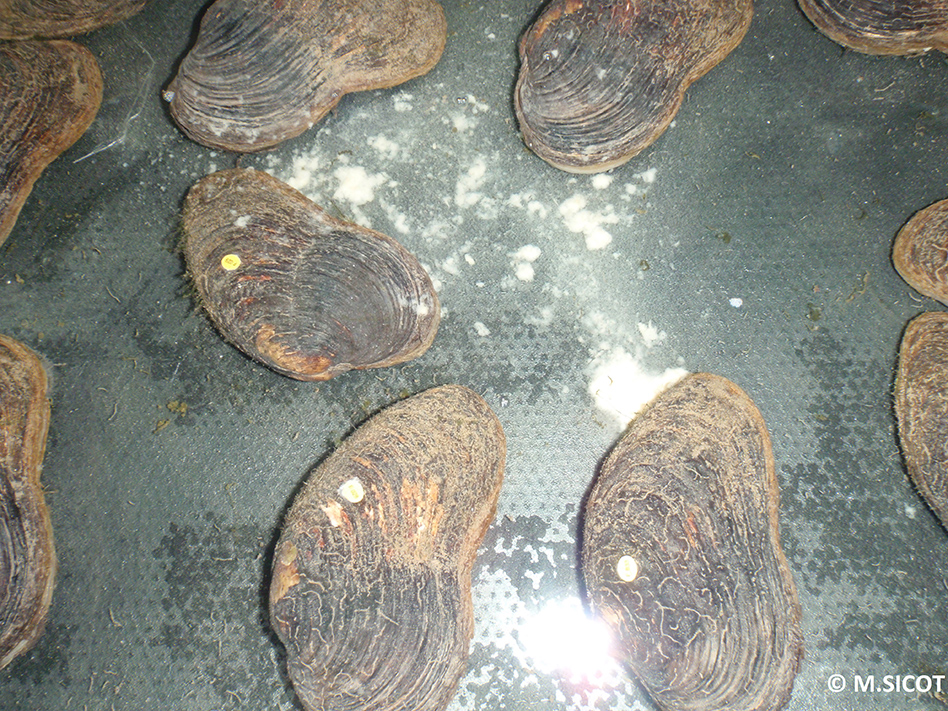
Emission of glochidias by specimens of Charente Giant Pearl Mussel
The first specimens of Charente Giant Pearl Mussel issued glochidias in the beginning of April, the other ones followed only days after. It has to be noted the temporary difference in the emission of the specimens of Creuse who issued glochidias a couple of weeks later than the Charente mussels.
Several issued glochias were however not viable. The infestations started with viable specimens of glochidias.
Infestations
The sturgeons were put in contact with the glochidias issued by the Giant Peal Mussels (witish substance visible on the foto on the left) in a little container; so that these ones can hook to the sturgeons' gills.
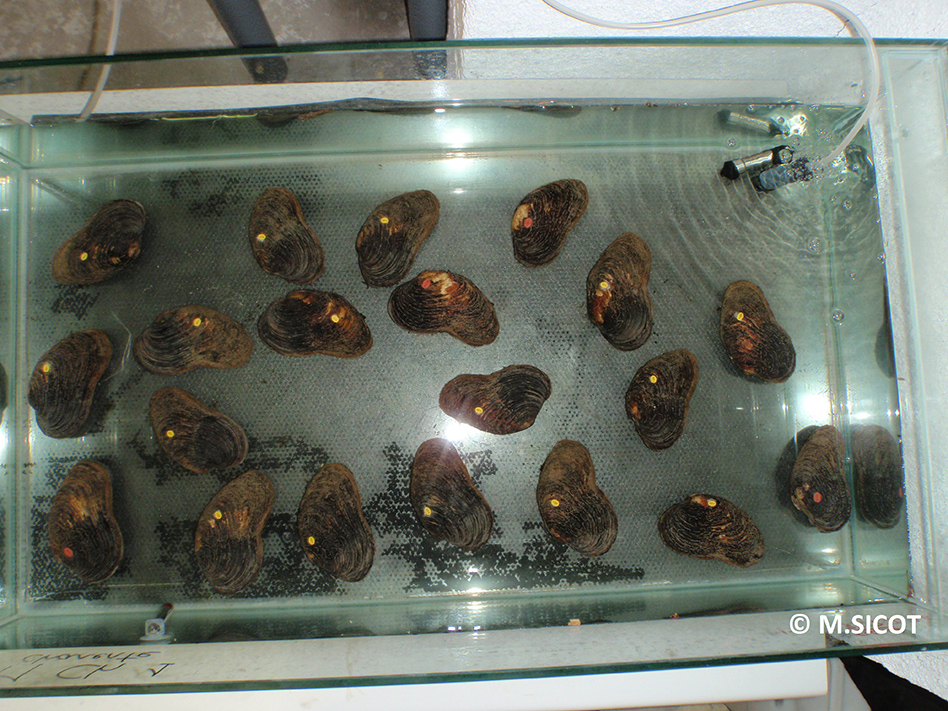
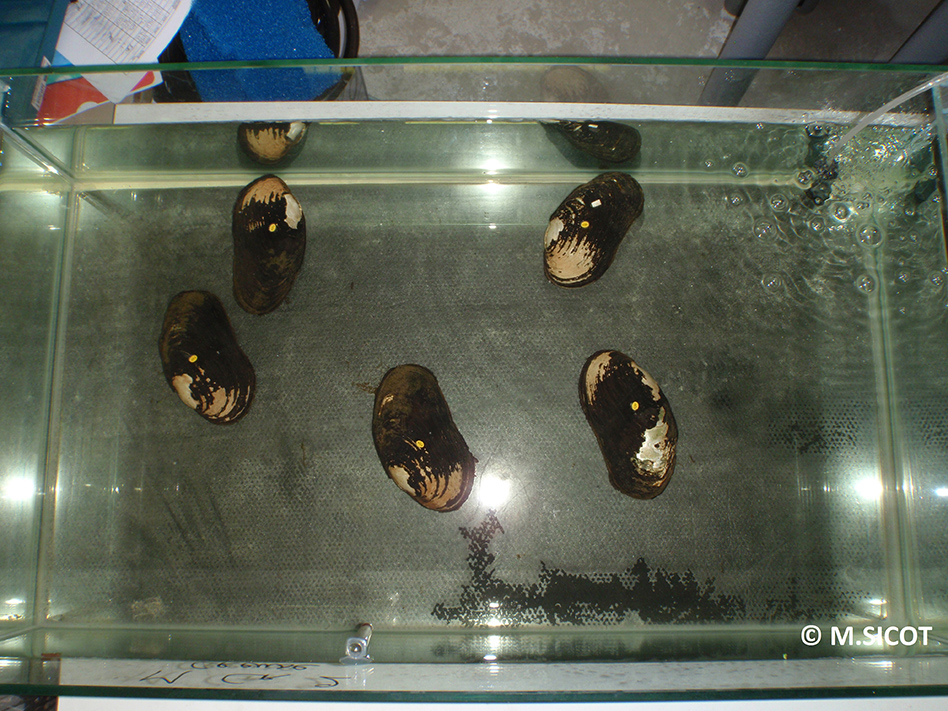
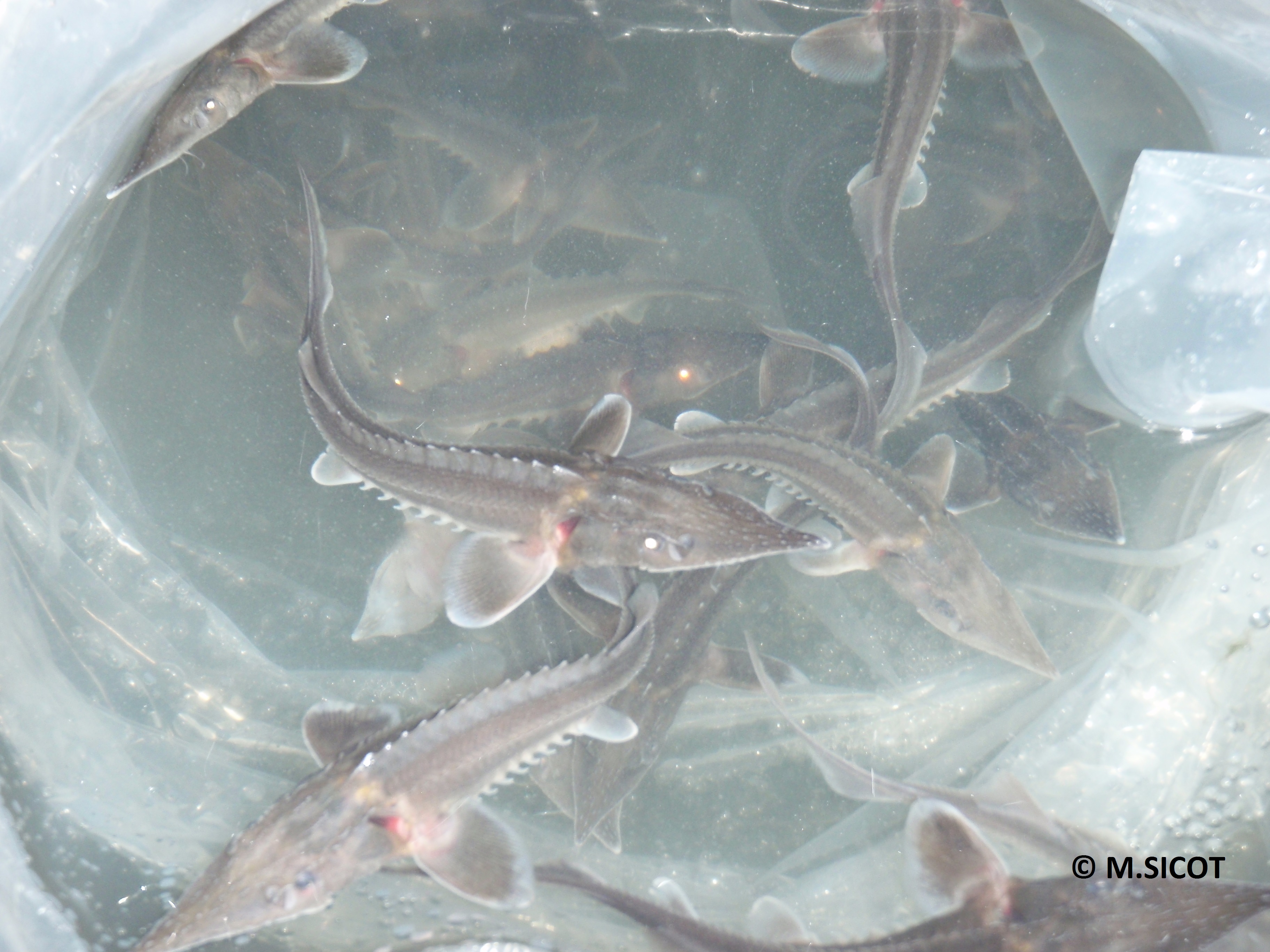
Cylinders for the sturgeons breeding
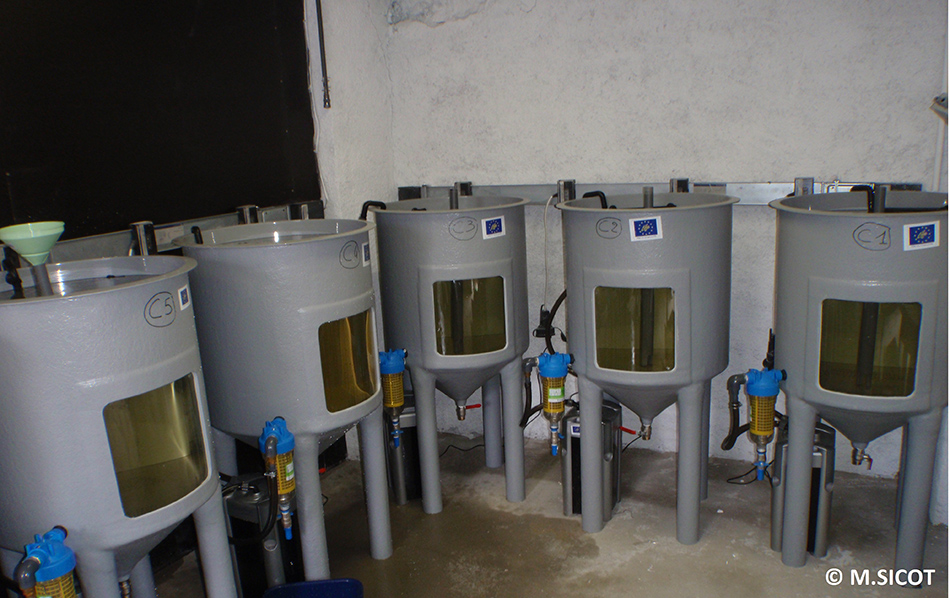 The conic cylinders were created according to the specific regulation for the maintenance and experiment, in order to be able to contain 20 fishes and collect the juveniles (young mussels) once they unhooked from the sturgeons' gills.
The conic cylinders were created according to the specific regulation for the maintenance and experiment, in order to be able to contain 20 fishes and collect the juveniles (young mussels) once they unhooked from the sturgeons' gills. Breeding basins
Breeding basinsFiltres
The second one, in black, hidden under the cylinder on the picture is made up of 4 filtration baskets:
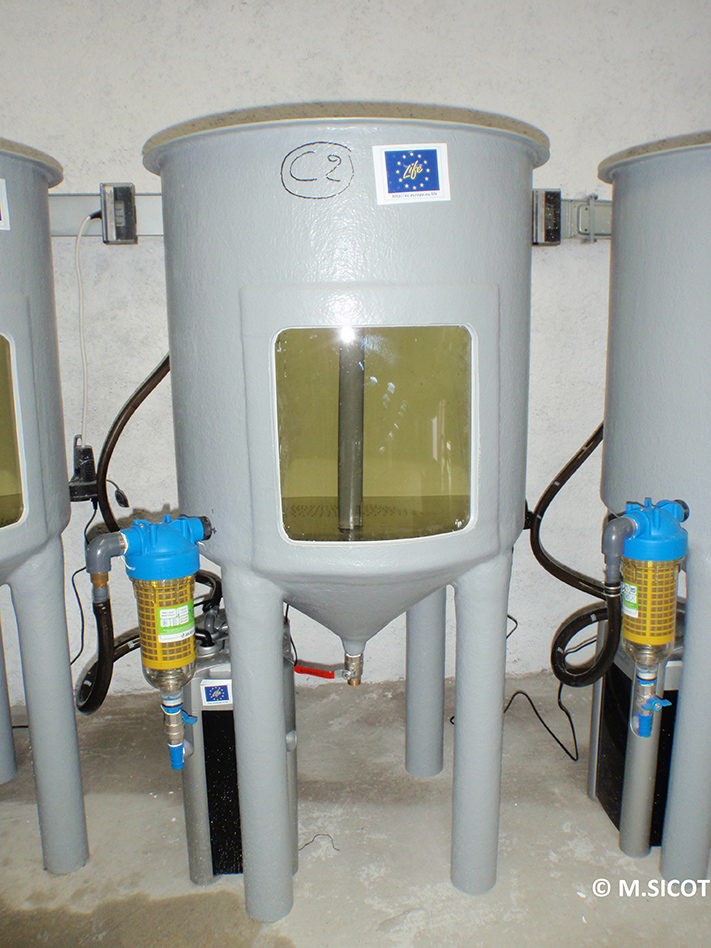 FIRST BASKET : The first basket is an organic filter full of balls on which the "good bacterias" will fix. These bacterias enable the decomposition of the toxic elements contained in the water of the aquarium in chimical elements with low toxicity.
FIRST BASKET : The first basket is an organic filter full of balls on which the "good bacterias" will fix. These bacterias enable the decomposition of the toxic elements contained in the water of the aquarium in chimical elements with low toxicity.SECOND BASKET : The second basket contains cotton wool to enable the filtration of the finest particles contained in the cylinders water.
THIRD BASKET : Filtration foams and active coal are the components of the third basket. They aim at absorbing the toxic substances by avoiding their rejection in the water.
FOURTH BASKET: The fourth basket contains two levels of filtration foam, bigger than the cotton wool, together with a level of cotton wool. These filters ensure the good ecological balance of the sturgeons water and therefore enable a good growth of the mussels.
Electrical panel of the animal facility
The animal facility is electrically powered with an electrical panel. In case of a loss of energy supply, the electrical panel is connected to a power generator with an automatic actuating mechanism.
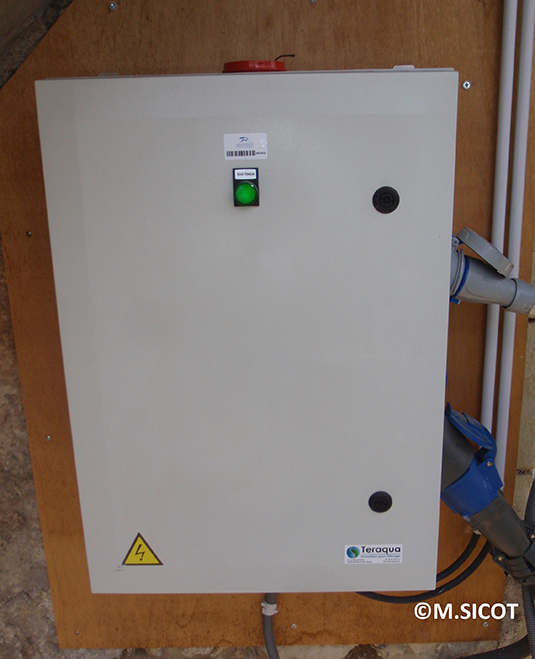

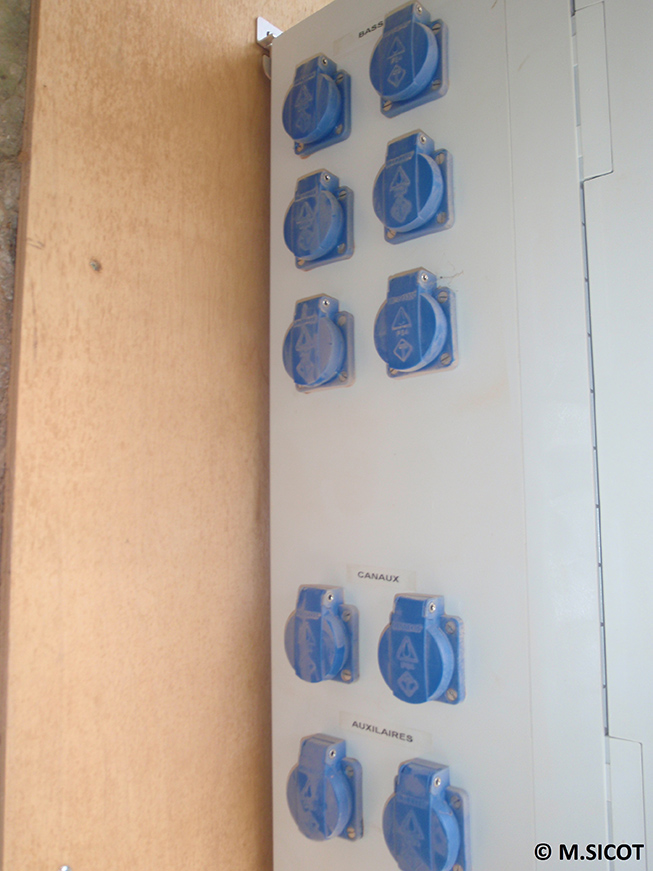
Power generator
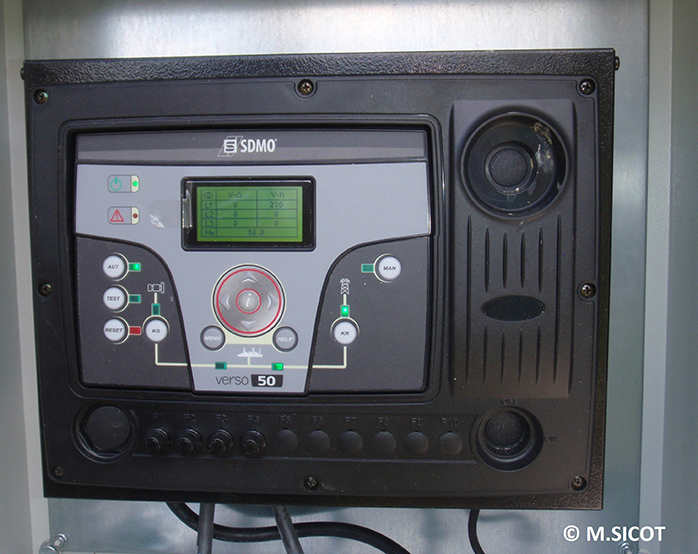
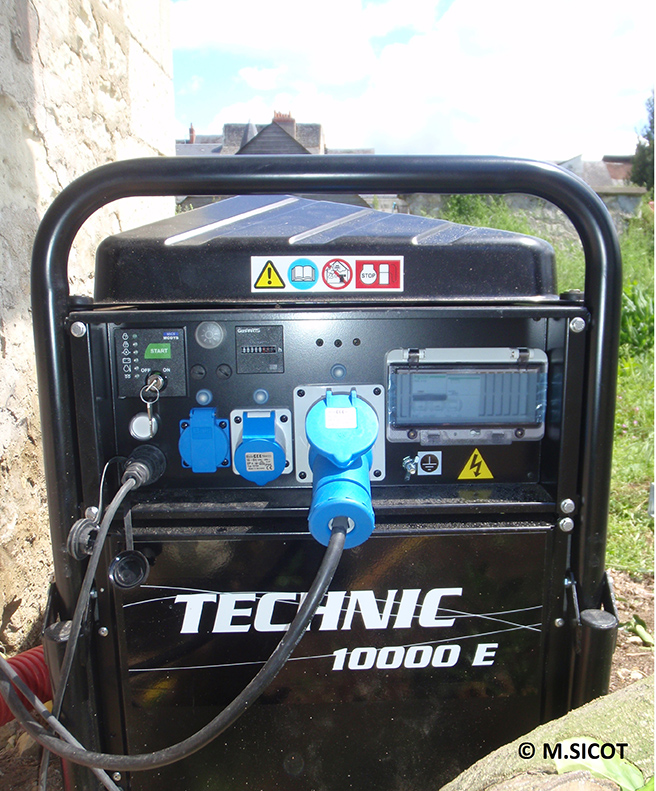
Alarm system
Finally, to improve the security of the filtration of the animal facility, this one is connected to an alarm system enabling a continuous moritoring of the oxygen and temperature in all the basins of the animal facility. It also enables the emission of an alert message to the LIFE team in case of a fall of the planned rates in oxygen.
JANUARY 2016 : The earthmoving work for the construction of the breeding laboratory in Chinon has started ! We will soon be able to welcome sturgeons and the mussels currently bred in Banyoles.
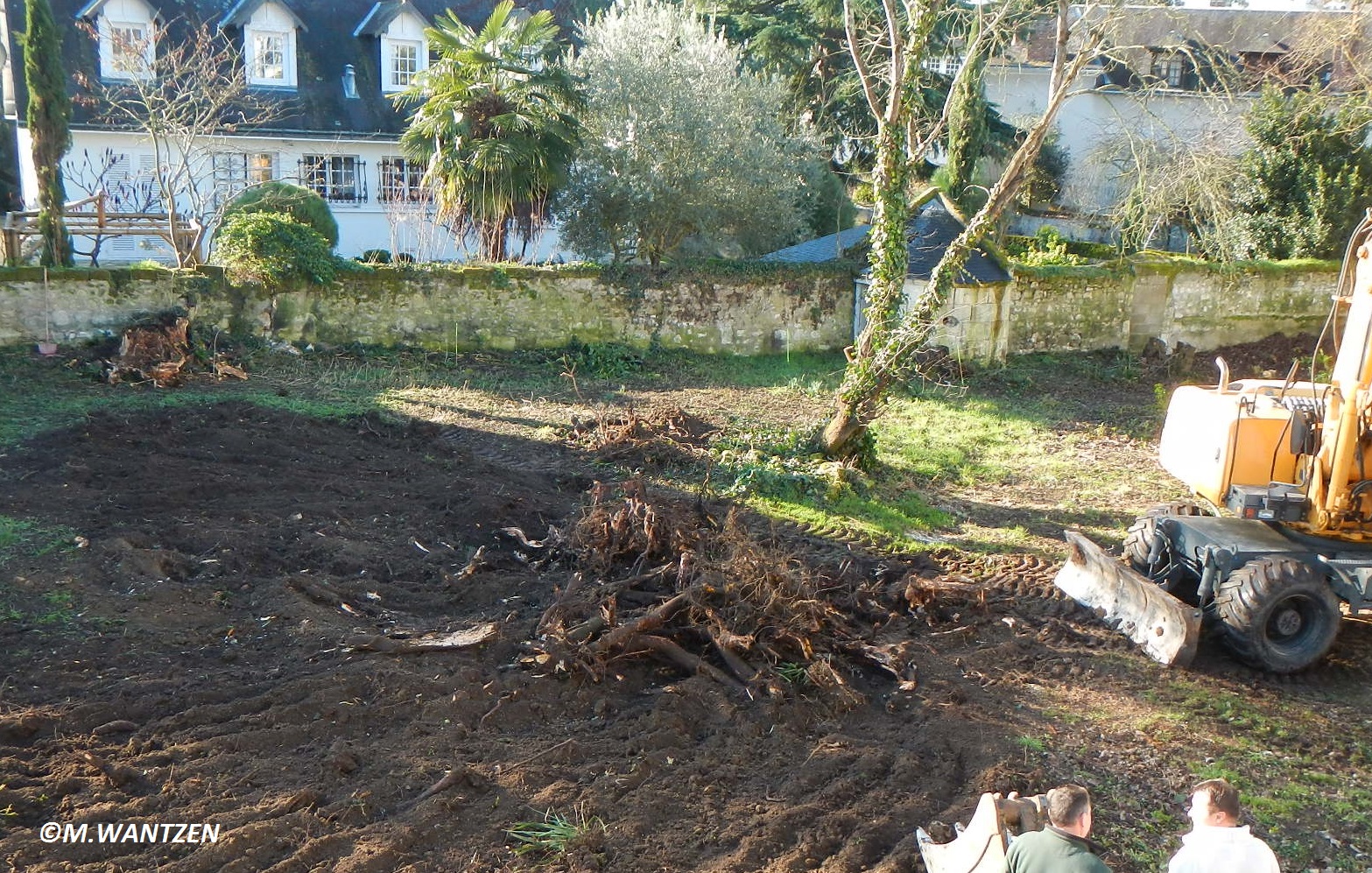
May 2015: The first baby mussels are born!
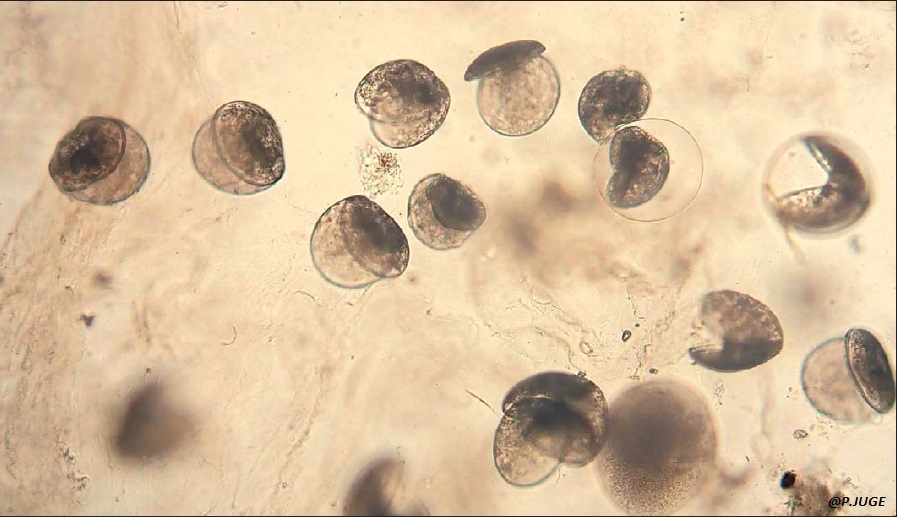
Our mussels farm in the Banyoles station witnessed the birth of the first Giant Pearl Mussel juveniles of our project! About 7000 juveniles have been counted. However the mortality rate being very high during the first months of a mussel, we cannot currently state on the exact figure of juveniles still alive.
The size of these ones (about 200μm once collected) and the growth being really slow, it makes the count difficult once the juveniles are bred in artificial channels.
17 APRIL 2015 : Reimplantation of the 10 individuals collected on the 18 March 2015 in their area of origin: in Charente on the “site of Port d’Envaux ».
